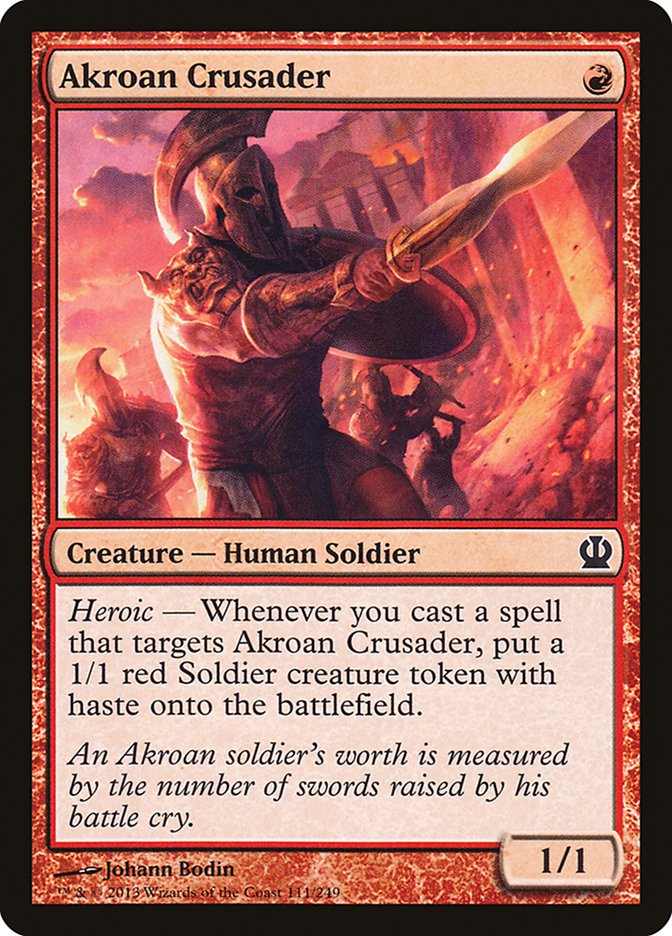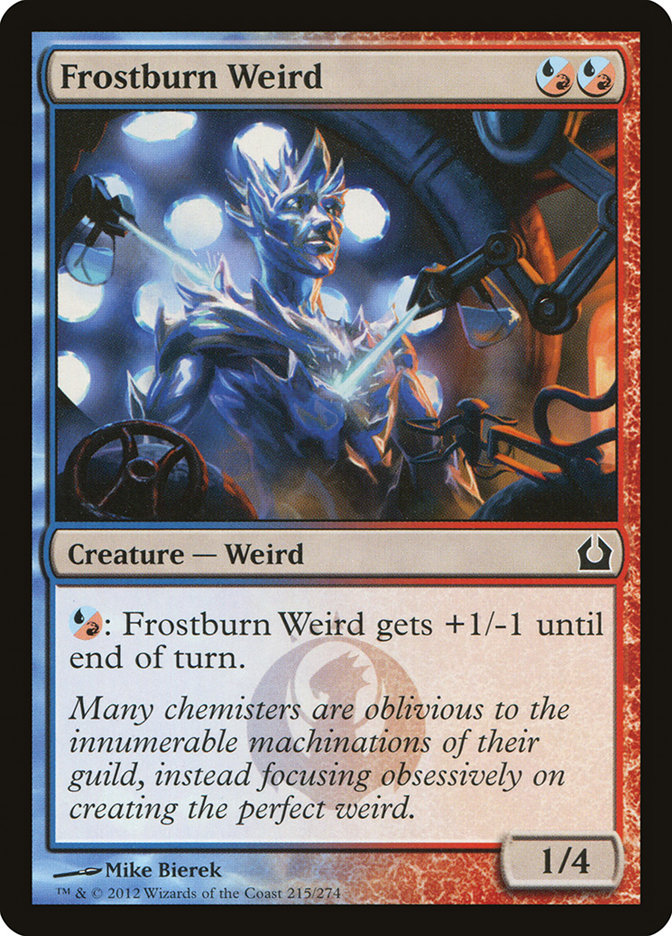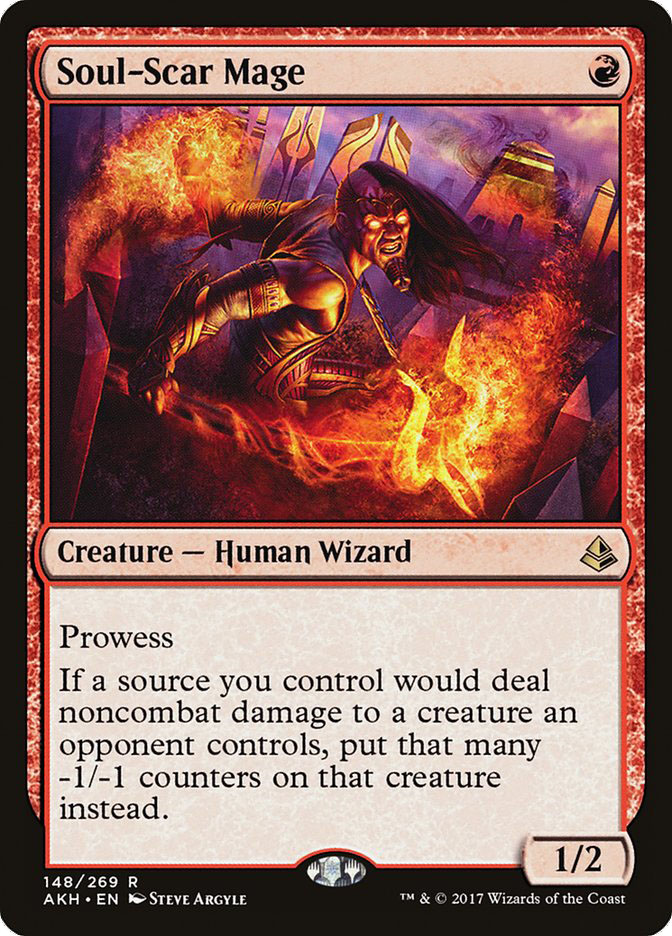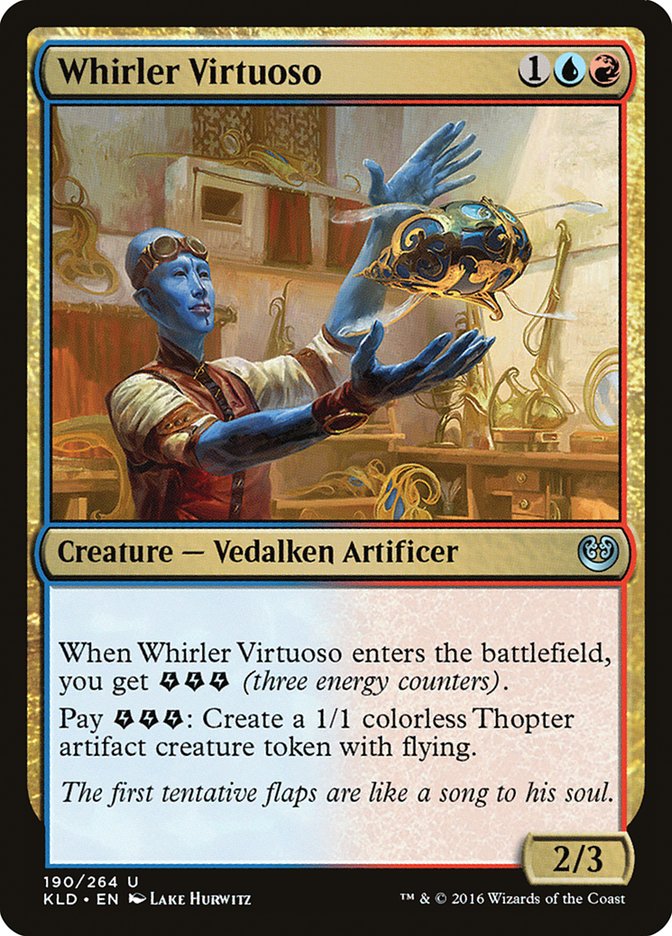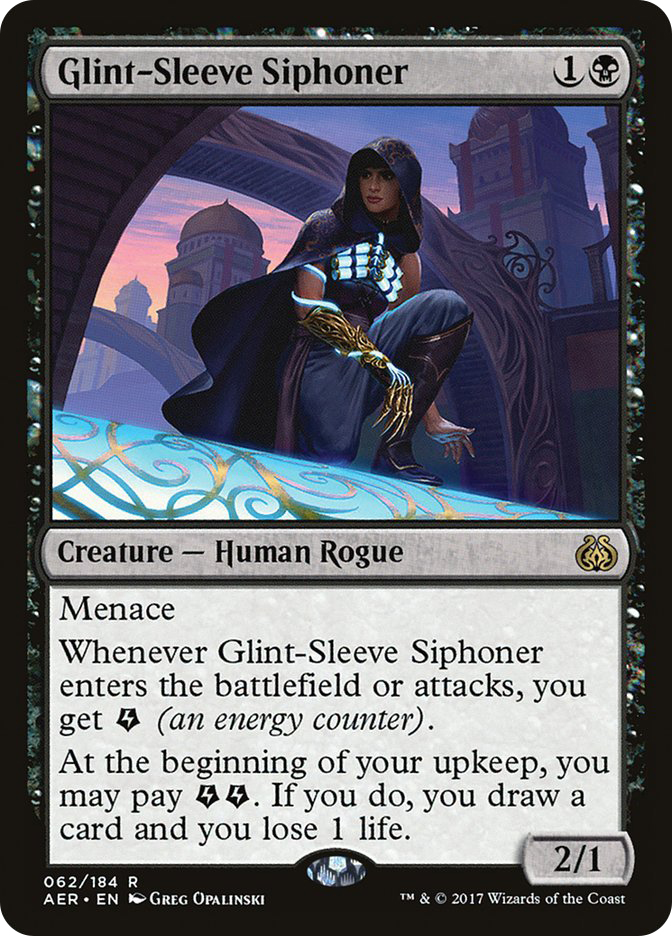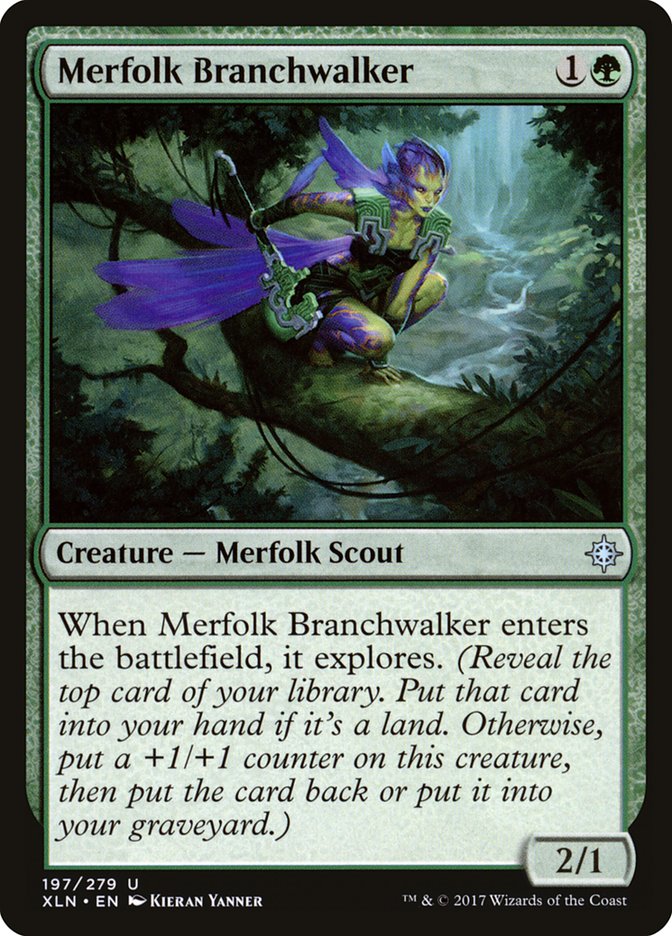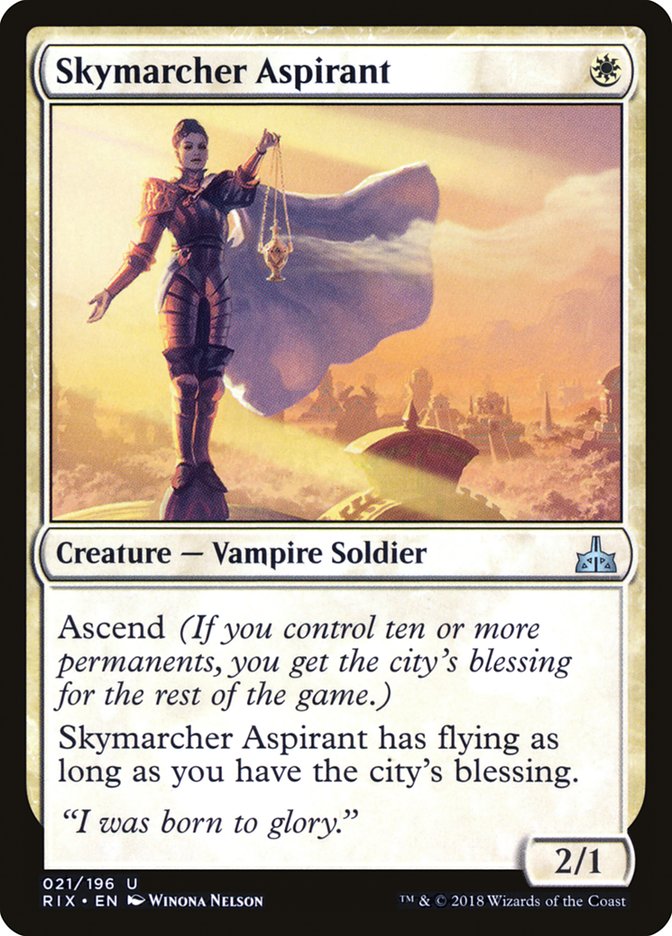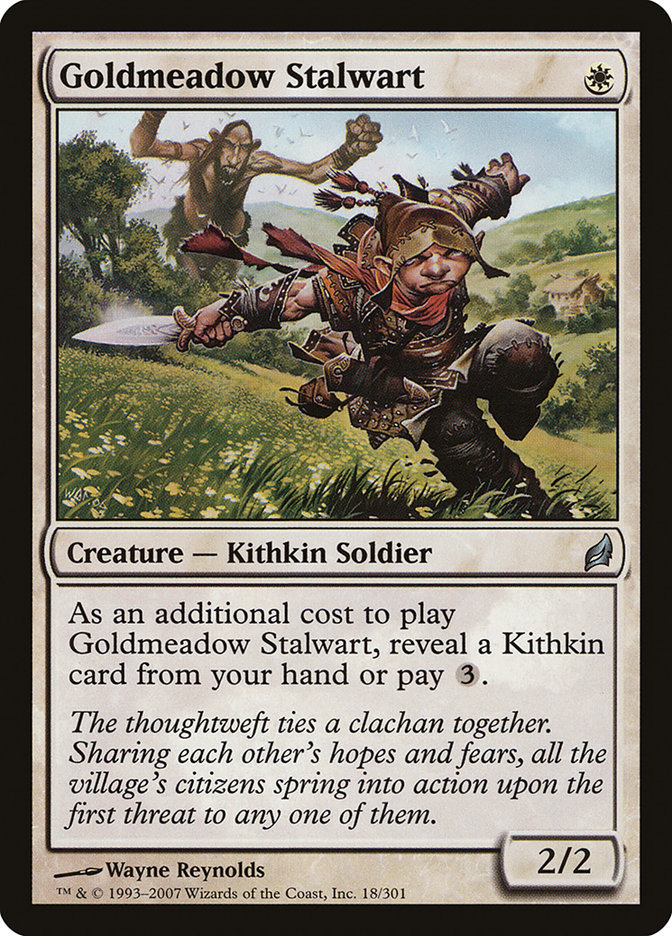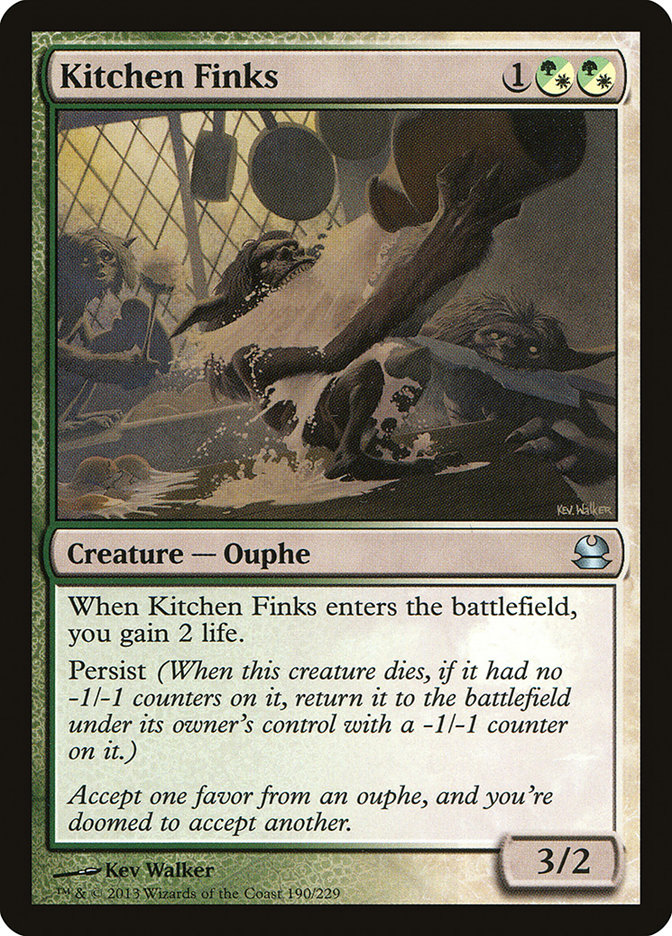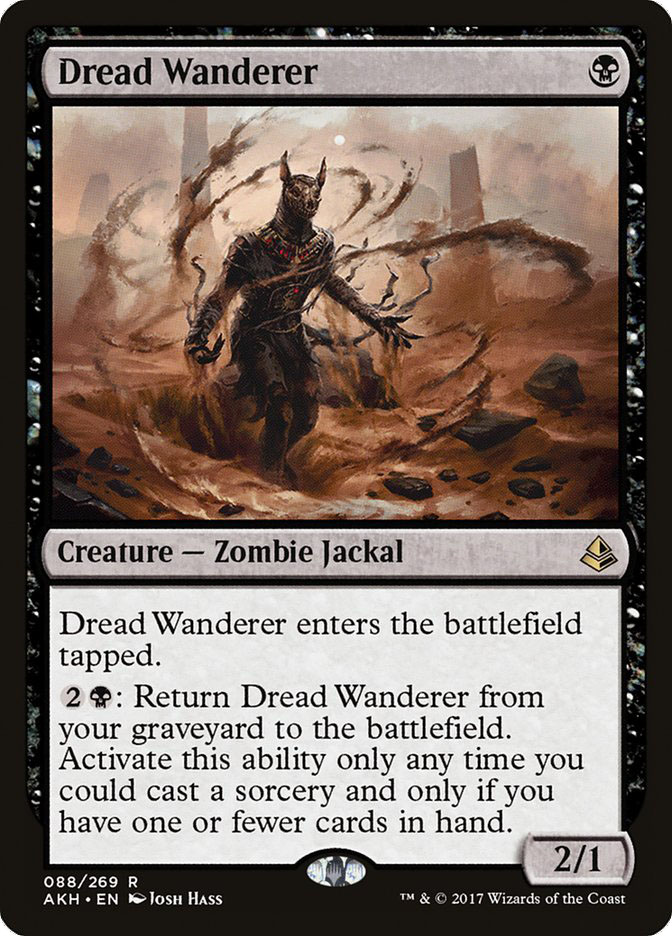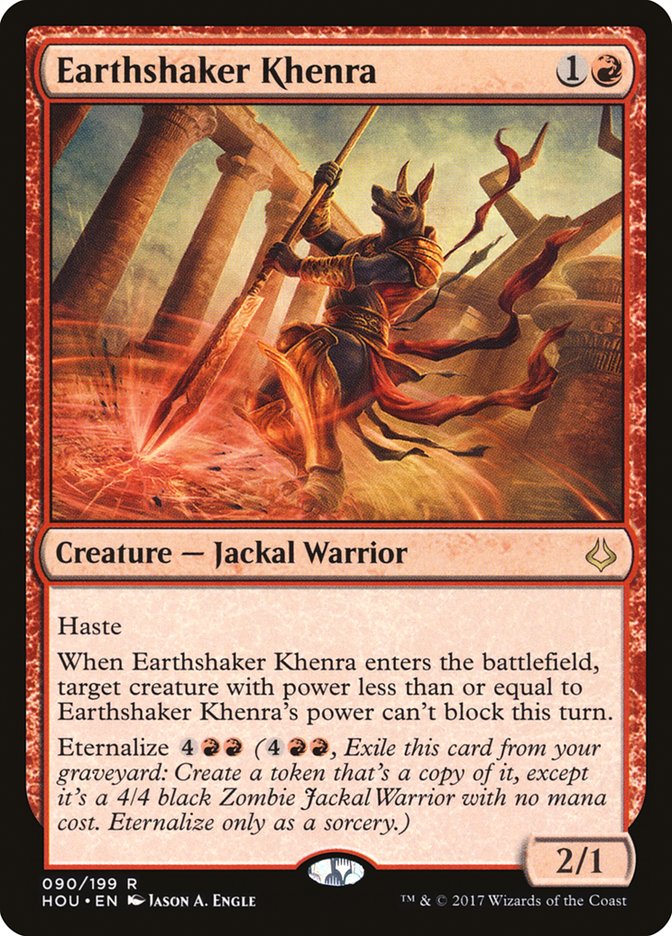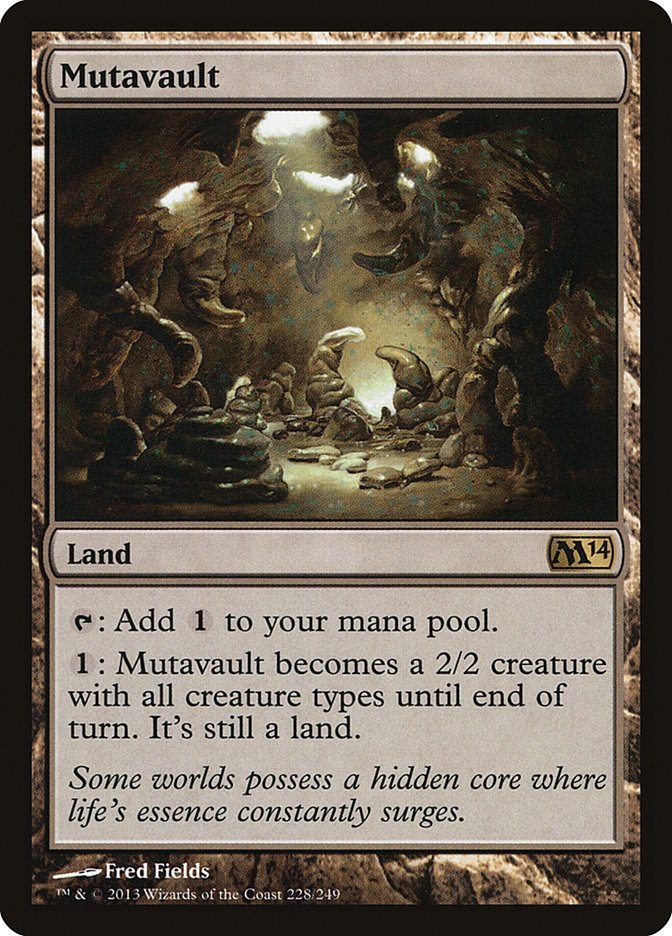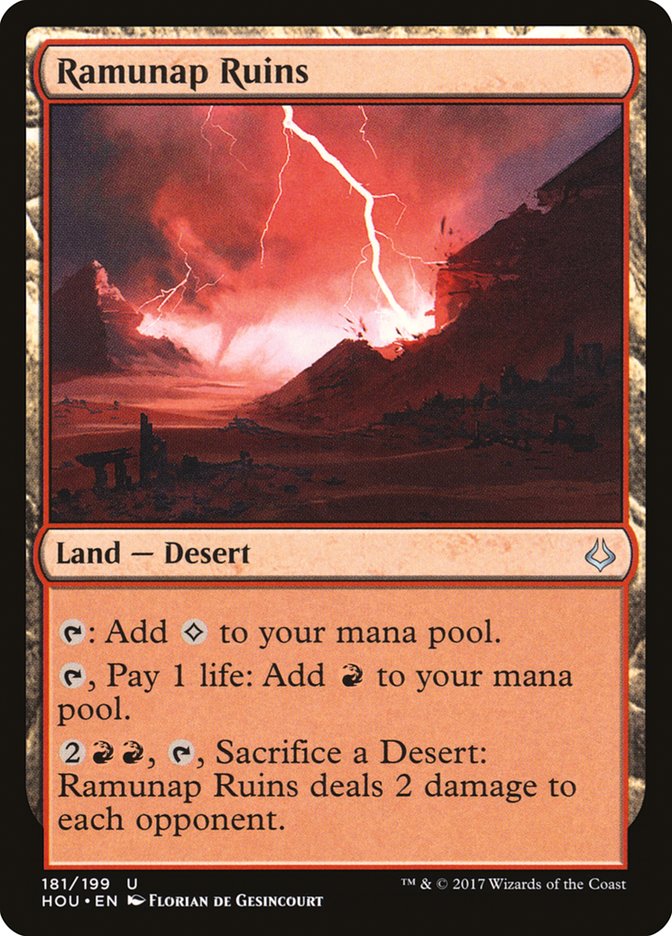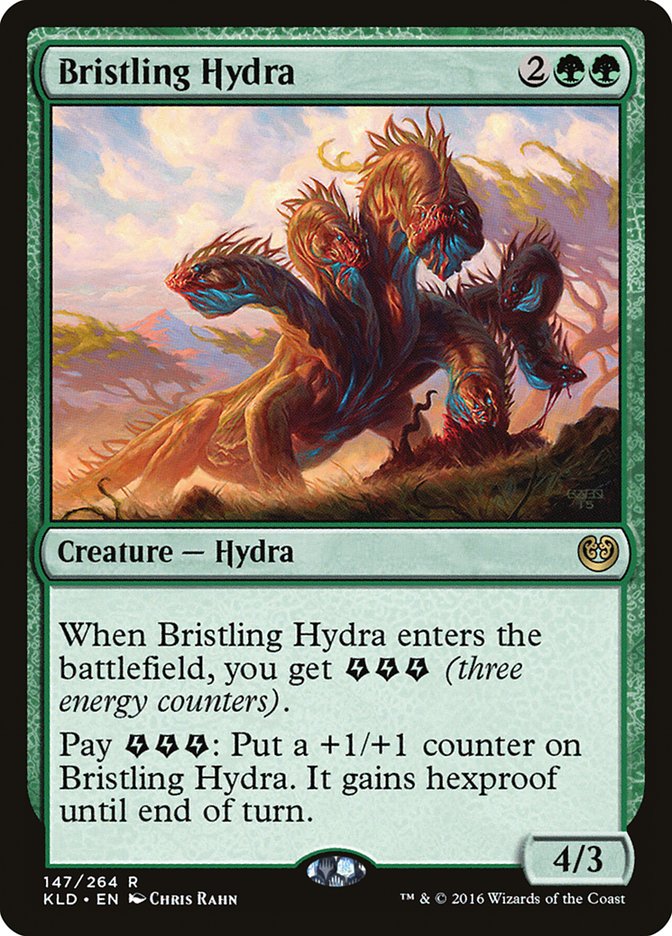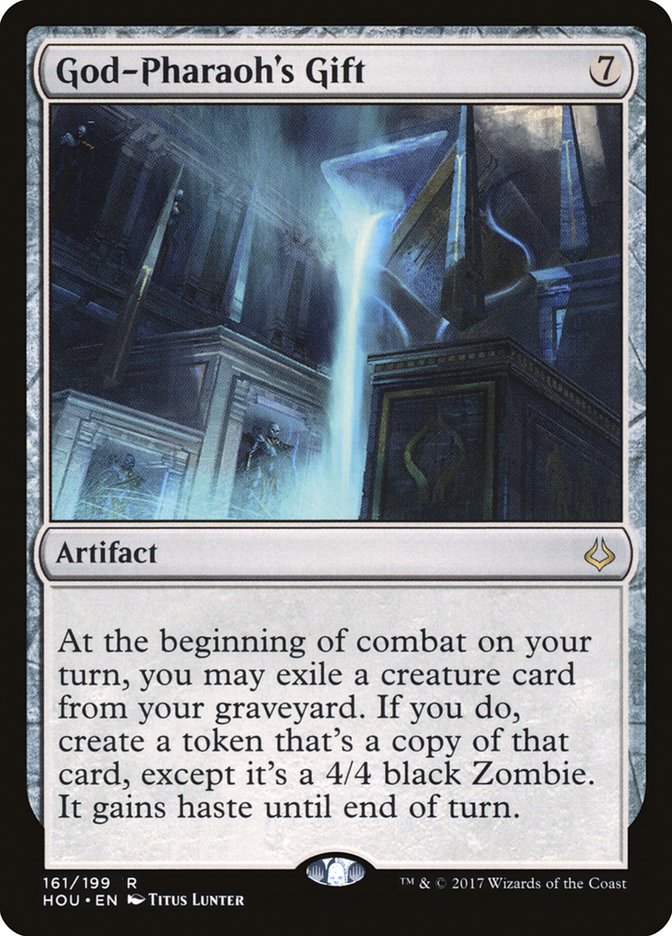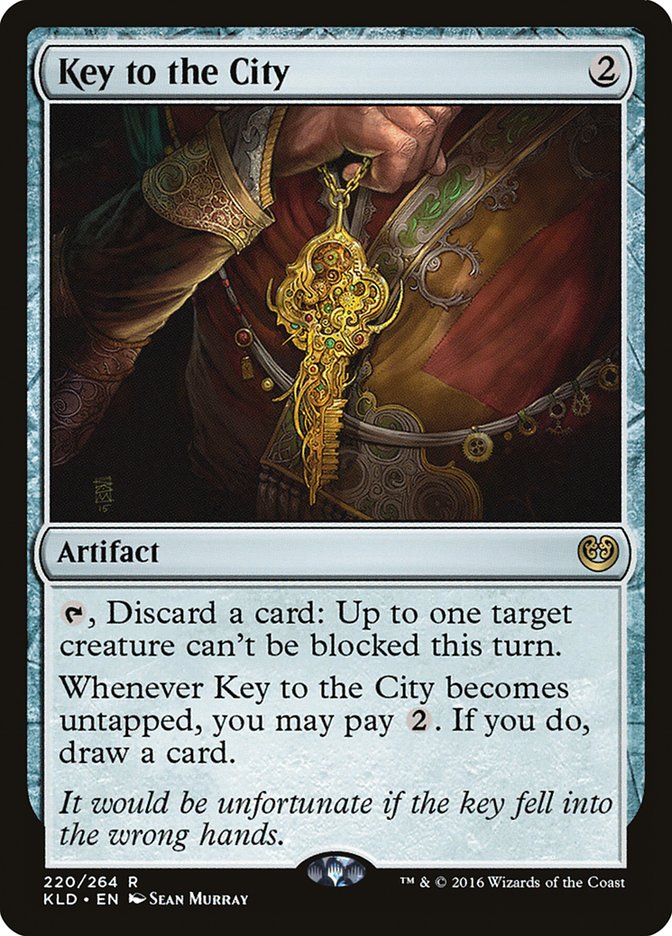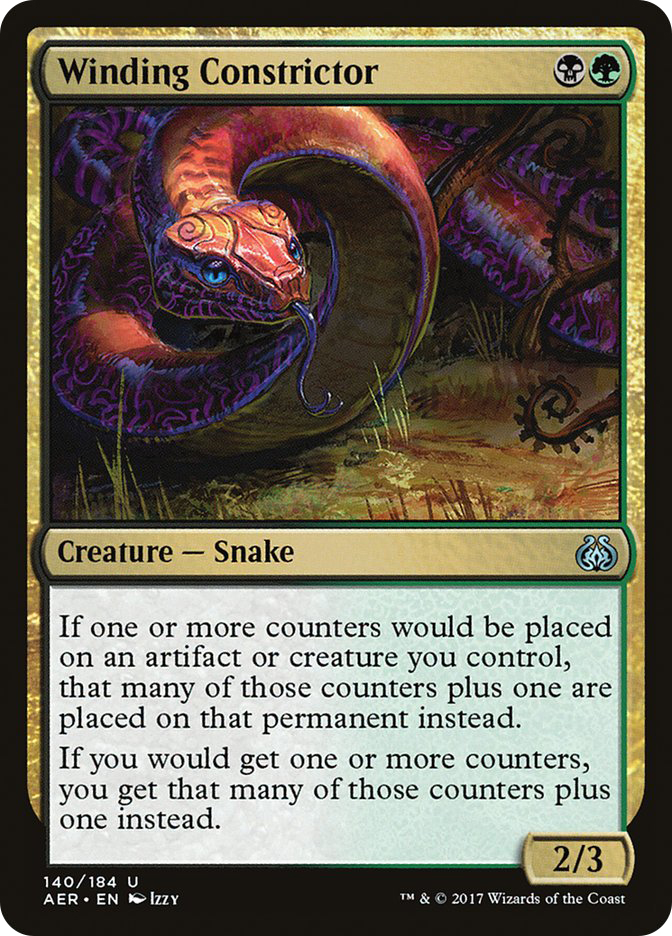This week is the reverse. Let’s be mostly positive.
After the most recent bans Standard is a fairly open format, but among the
things that are certain is that aggro is good. Between Mardu, Mono-Red, and
the Night Market Lookout scale of Mono-Black to B/R, there are three fairly
distinct decks.
If you look through Shaun Mclaren’s Top 16 Standard deck rankings
last week
you also get to see some even odder aggro options like W/U Auras or the
Path of Mettle W/R deck.
Like I said, this is the inverse. How do you build a good aggro deck, why
are these decks good, and especially what might have improve with the
midrange metagame shift from Temur to Grixis, G/R, and G/B?
Tempo and Resources
Basic definitions time.
Magic is about three resources: life, cards, and untapping (mana). Life is
largely non-renewable, while cards and mana are both renewable. Which
renewable resource you are limited on usually changes as the game
progresses from mana to cards.
Card advantage should be obvious. You make a play that puts you ahead on
cards. The less obvious part is that this is largely a count of useable
cards. Your seventh land in aggro likely isn’t a real card.
Virtual card advantage is making a play that doesn’t physically place you
up cardboard, but makes some of their cards unusable. You Wasteland their
Underground Sea and activate Rishadan Port, their True-Name Nemesis and
Jace, the Mind Sculptor are unusable.
Tempo is the act of attempting to convert mana and cards either directly
into damage or into temporary card advantage that you can then leverage to
produce real damage or cards.
Not all aggro is tempo. Aggro largely applies to any deck where if given
the decision between including a card focused on exchanging resources or
focused on profitably attacking or dealing damage, you choose the later.
The lines are blurry; you might play Fatal Push because it clears a path or
play Glint-Sleeve Siphoner because it’s hard to block and the card stream
keeps you in the driver’s seat or you might sideboard into a control role
against a faster deck, but in most matchups your goal is going to be
proactively killing them.
That all said, let’s get going.
Fallacy One: Card Parity
Your opponent by default draws the same number of cards as you do in a
game. Maybe it’s plus or minus one due to a mulligan, but in useable card
count that’s within mana flood margins.
The biggest failure mode for recent aggro decks is to structurally fall
into game play sequences where they are playing card for card against
midrange.
If your opponent’s deck can curve Longtusk Cub into Whirler Virtuoso into
Glorybringer, you cannot reasonably expect to match them threat for threat
every turn. They will just two-for-one you a bunch and bury you.
The most common way to build a bad aggro deck is try to curve out one, two,
three, four with cards that aren’t actually drop-for-drop better than your
opponent’s cards. Unless the opposing decks are really bad, you can’t hope
they just fail to curve out. Your deck is going to do the same almost as
often if it looks like theirs.
Good aggro decks are all about finding ways to properly skew the curve outs
to your side.
The Failure of Two-Drops
One of the most telling indicators of how you need to build your aggressive
deck is how your two-drops line up against opposing two-cost spells.
In Theros Standard, the Devotion-centric two-drops simply weren’t
things aggro decks could play card for card against. Stretching up the
curve wasn’t much better in the face of Master of Waves and Desecration
Demon. Tom Ross was successful with Boss Sligh by playing almost all
one-drops. Shove first, ask questions later, and hope they forgot their
Drown in Sorrows. If they play one good blocker or a removal spell on turn
2 on the draw, you can just have four or however many good attackers the
next turn and force through relevant damage.
In pre-ban Ixalan Standard you would think the same logic applied.
Longtusk Cub and Harnessed Lightning handled two-drop parity well but not a
horde. The issue was that there just weren’t playable one-drops. Past
Soul-Scar Mage and Bomat Courier, both notably base one power, you had
Rigging Runner, the turn one 1/1, and…some stuff with menace?
Whirler Virtuoso was also another huge issue. A single card could easily
erase any low end advantage you could gain on turn 3. This would be similar
to Tom’s Boss Sligh deck playing into a field of maindeck Drown in Sorrows.
Again, you had to add bulk to your deck and compete on the higher threat
level of Rampaging Ferocidon and Hazoret the Fervent.
Right now life is a bit easier. Fatal Push lets other decks trade early,
but Longtusk Cub is no longer a pure brick wall on turn 2 post-Attune with
Aether. People are playing less bulky low drops, less Whirler Virtuosos,
and most importantly, Rivals of Ixalan contained quite a few good
one-drops. I’m a little skeptical of my Consuming Fervor Pirates list from
last week given the presence of Fatal Push, and I’m a little skeptical of
B/R Pirates for the same “how can you ever cast spells” reasons I had last
week, but it feels like we are getting closer to being able to go under
opposing decks effectively.
One thing that caught my eye on one-drop searches is that Skymarcher
Aspirant lines up with mana that casts Toolcraft Exemplar a little better
than Inventor’s Apprentice. I don’t think Mardu Vehicles can give up
Unlicensed Disintegration, but if you wanted to push your deck lower to the
ground, another white one-drop might be better than the red alternatives.
Note that you don’t always need to do a full refocus. When Faeries was
rampant in Standard, it was way too easy for them to pick off generic 2/2s
at low cost via Agony Warp and tokens. Similarly, those cards failed to
perform in mirrors or versus Kitchen Finks. Most of the successful
refocuses of Kithkin kept a low curve but played more first strike
attackers, like Knight of the White Orchid, or just their own Kitchen
Finks. They were largely the same Spectral Procession plan, but they just
changed over to good attackers.
In current Standard this is a large part of the difference between base-red
and base-black aggro. The difference is just a level extracted. Against
green decks, Dread Wanderer is relatively easy to start profitably
blocking. In the Temur era of bigger Longtusk Cubs and Bristling Hydras
this was even more pronounced and hit Scrapheap Scrounger as well. It was
better to just play Earthshaker Khenras because despite the recursion, you
were never getting a good attack past turn 5, regardless of how long they
stuck around. This also applies to mirrors: a bonus attack is just better
than not dying most of the time, especially when end games are largely
impossible to kill Hazoret the Fervents. On the flip side, if your opponent
is all Fatal Pushes, the recursive threats are much better, and Whirler
Virtuoso is basically unstoppable by either side.
If you’re expecting tons of Grixis Energy, the black creatures are probably
better; if your opponents are more likely to play G/B Energy or Thrashing
Brontodon, I would lean towards the red cards.
Mana-ging Flood
Aside from mana curve, the other way to end up playing card for card with
your midrange opponents is literally just drawing the same number of cards
as they do. Let’s look again at the Boss Sligh deck as a great example of
this.
Creatures (26)
- 4 Ash Zealot
- 4 Rakdos Cackler
- 4 Legion Loyalist
- 4 Foundry Street Denizen
- 2 Rubblebelt Maaka
- 4 Akroan Crusader
- 4 Firedrinker Satyr
Lands (17)
- 17 Mountain
Spells (17)

If you load up your deck with high velocity, low impact cards you can’t
afford to only draw a few of them. You need to draw spells in large amounts
and keep drawing them.
Let’s talk about some numbers in terms of casting spells.
If you are going to hit your fourth land on time for some big whammy like
Hellrider or Hazoret, you are going to want 23 or 24 lands.
If you are mostly capping out at hitting three mana on time, 20 to 22 is
the right spot depending on how well you operate off a land or two.
If your deck doesn’t really need that third land on time and can run off
one mana sometimes, that’s when you get into the seventeen to ninteen
range.
Playing the wrong number of lands for your spells results in flooding out
and drawing too few spells to win, or not drawing enough lands to cast your
game winner on time and dying. That’s generally called “losing games” and
not “winning tournaments.”
Creature-lands or similar cards are huge game changers in this arena. You
can effectively move your deck up the curve without reducing your ability
to keep producing threats.
Where does that leave our current Standard aggro decks?
Creatures (21)
- 2 Pia Nalaar
- 4 Bomat Courier
- 4 Scrapheap Scrounger
- 4 Toolcraft Exemplar
- 3 Veteran Motorist
- 3 Hazoret the Fervent
- 1 Ammit Eternal
Planeswalkers (1)
Lands (23)
Spells (15)

Mardu has to play 23 or 24 lands. The math of actually being Mardu doesn’t
work out otherwise. It compensates via having lots of per card impact.
Scrapheap Scrounger recursion, 4/4 flying vehicles, Unlicensed
Disintegration, and Hazoret as the four-drop of choice now that Gideon is
gone. Technically, it had creature-lands last year to mitigate this, but
they rarely ever mattered and it was more of a case where anything attached
to your Stone Quarry was good enough.
Creatures (24)
- 4 Bomat Courier
- 2 Kari Zev, Skyship Raider
- 2 Glorybringer
- 4 Hazoret the Fervent
- 4 Ahn-Crop Crasher
- 4 Soul-Scar Mage
- 4 Earthshaker Khenra
Lands (22)
Spells (14)

Mono-Red needs to adjust in a post-Ramunap Ruins world. It used to have a
way to leverage a higher land count, but Sunscorched Desert is a joke and
Scavenger Grounds is super conditional. Hazoret doesn’t have to be cast on
turn 4, and honestly, barring mulligans it never attacks then. I think
Tristan playing Glorybringer is a bit ambitious and that you certainly
don’t want six colorless lands, but the raw number is right.
Creatures (24)
- 4 Scrapheap Scrounger
- 4 Night Market Lookout
- 4 Glint-Sleeve Siphoner
- 4 Gifted Aetherborn
- 4 Dread Wanderer
- 4 Ruin Raider
Lands (21)
Spells (15)

Mono-Black is where you really want to start skimping on lands. You don’t
have four-drops, you have twelve one-drops that really aren’t good going
late, and between Fatal Push and Supernatural Stamina your spells keep the
low curve going. This list is a bit old, but the same principles still
apply. There wasn’t even a black card banned! How lucky!
Okay, what is actually lucky is that you can play Grasping
Scoundrel and go full blown sixteen two- power two-drops. There really
aren’t that many Sweltering Suns floating around yet, and I’m unsure how
many more there can even be. Harsh Scrutiny is a fine answer to Whirler
Virtuoso, which is the only other card a low to the ground deck like that
is super afraid of.
Creatures (30)
- 4 Scrapheap Scrounger
- 4 Night Market Lookout
- 4 Glint-Sleeve Siphoner
- 4 Dread Wanderer
- 4 Bone Picker
- 2 Ruin Raider
- 4 Vicious Conquistador
- 4 Grasping Scoundrel
Lands (19)
- 19 Swamp
Spells (11)

I think this list might be a little heavy on three-drops, and
unfortunately, I don’t think you can play Heart of Kiran with all these
1/1s. This deck also has a huge issue with control, where in addition to
your removal, cards like Bone Picker are basically blanks, and I’m not sure
this comes close to solving that.
Race to the Finish
Last week I made a comment about how Ramunap Ruins wasn’t even that good in
Standard prior to the ban updates. In a post-Temur world it had a better
outlook, but there’s good discussion behind why this was true.
Once the opposing decks turned the corner, Ramunap Red died fast. As in too
fast to even activate Ramunap Ruins more than once. There weren’t a ton of
games which fell in the window where you drew six lands, dealt them sixteen
damage, and couldn’t deal the last four. Your opponents’ Glorybringer,
giant Longtusk Cubs, The Scarab God, or just Angel of Inventions would just
close games before you could reach much further. Earthshaker Khenra was in
a similar position where the Zombie version was rarely relevant outside of
mirror matches.
If you’re going to attempt to have a long game plan as an aggro deck, it
needs to actually be something you can execute before you are actually shut
out. If that’s a concern, the best long game plan is kill them faster.
Whether that shutout is because your opponent hits some huge life swing
like Sphinx’s Revelation or just kills you doesn’t matter.
In current Standard this is more of an issue against G/R Monsters than it
is against Grixis Energy. This is also really fortunate for the aggro decks
because low to the ground beats are much more effective against the deck
with no Whirler Virtuosos and no Fatal Pushes. The big takeaway here should
be that Chandra, Torch of Defiance and Glorybringer aren’t cards you want
against the G/R deck.
It seems like similar logic should apply to the G/B Winding Constrictor
decks, but in practice the matchup plays out very different from the G/R
one. Their threats just aren’t sticky, and importantly their biggest
creatures die to Abrade. You can’t just get boxed out of relevant
interaction on size, so having larger threats that kill their stuff is an
effective route to victory because you can configure to play card for card
with them.
The flip side of don’t try to go toe-to-toe with midrange is… except when
you just can. My statement about shifting to controlling plans is not often
possible, but this is exactly where you want it. You need removal already
to beat their early Winding Constrictor starts. Their creatures are all
things you can kill without throwing multiple cards against them. You have
access to specific cards that are both good against them and provide
massive standalone advantages in Glorybringer and Chandra, Torch of
Defiance. Possibly most important: just attacking with dorks has a big flaw
in Walking Ballista for two. Not only does your control plan work, but your
aggressive plan is on shaky ground so you need the swap to happen.
Going Wide
I mentioned non-tempo aggro, but haven’t really talked about any decks in
that category yet.
If you want to think about non-tempo aggro, think about Zombies from Amonkhet Standard or Mono-Blue Devotion from Theros or
Kithkin back in Lorwyn. You are largely aggro, but your plan is
accumulation of permanent synergies that keep your attacks profitable. The
reason these decks are typically tribal is that is the most common theme
that rewards you for just having a ton of stuff on the battlefield.
Merfolk in current Standard tries to play this game, but it fails as it
lacks the standalone impactful cards. Kumena, Tyrant of Orazca isn’t a
Cryptbreaker that single-handedly runs up the score by making more Zombies.
You don’t have single card whammies like Liliana’s Mastery or Master of
Waves. Your best threats just die to spot removal, unlike Thassa, God of
the Sea or Cloudgoat Ranger. Your enhancements also are easy to kill and
don’t stick like Honor of the Pure or Thalia’s Lieutenant.
That might sound like a lot, but it’s really just one problem. The best way
to describe this issue is single card vulnerabilities. Merfolk has a couple
key cards that provide the incremental advantage. None of them are sturdy.
None of them leave around value. If your opponent just casts Harnessed
Lightning, you are back to almost nothing, and unlike Modern Merfolk where
every card is a lord, it is very easy for them to have more answers than
you have real threats.
Like I said: none of your support cards are standalone threats. The
relevant ones all die to removal. They don’t create a lasting advantage. If
you want a successful non-tempo aggro deck, you need to be sticky or
redundant. Look to Oketra’s Monument for that, not Kumena, Tyrant of
Orazca.
Why The Beatdown?
Aggro often gets a bad rap as the easy thoughtless archetype. I think over
the last decade or so the play skill portion of this has slowly been eroded
by truly great players like Paul Rietzl and Tom Ross, but there’s more to
Magic than just game play. As scripted as some aggressive decks might look,
the process of finding the good one definitely requires finesse.
Deck building and deck selection are hard. Take time, think about it, and
make good decisions.


